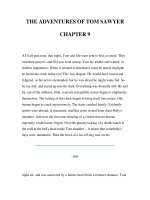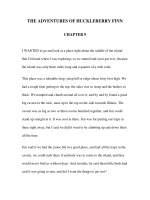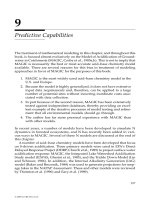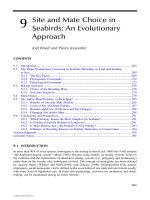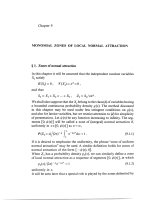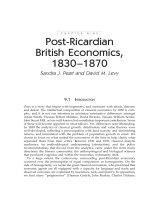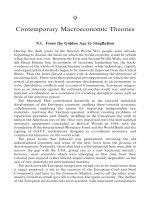Lecture Management of retail buying – Chapter 9: Translating plans into purchases
Bạn đang xem bản rút gọn của tài liệu. Xem và tải ngay bản đầy đủ của tài liệu tại đây (166.26 KB, 5 trang )
Ch. 9: Translating Plans into Purchases
•
•
•
•
Market locations & buying trips
Selecting new items
How items fit into the store’s stock plans
Buying job lots, irregulars & offprice
merchandise
• Developing product specifications
• Environmental considerations
Copyright © 2006 by John Wiley & Sons, Inc. All rights rese
Evaluating New Products
Is it right for my target customer?
Is it consistent with my store’s image?
Does it fit the buying plan?
•
•
•
•
•
•
•
•
•
•
Specialty appeal
Price line and taste
Proven acceptance
Current trends
Significant and observable
differences
Continuing utility
Good packaging
Promotional opportunities
Ability to reorder
Available shelf space
Copyright © 2006 by John Wiley & Sons, Inc. All rights rese
What is “Good” Packaging?
•
•
•
•
•
•
•
•
•
•
Protects the merchandise adequately
Conserves space, fits well on store fixtures
Reasonable weight for type of product
Reduces opportunities for theft
Attractive, distinctive – has eye appeal
Identifies product & its attributes clearly
If sealed, still allows reasonable inspection of product
Functional – easy to open, close, remove, hang up?
Provides adequate info about care & use of product
Multiple uses in addition to containing the product
Copyright © 2006 by John Wiley & Sons, Inc. All rights rese
Buying Deeply Discounted Items
for Resale
• Job lots – Bits & pieces of unrelated lines that
didn’t sell at regular prices
• Irregulars –Items with small imperfections or
in need of minor repairs
• Seconds – Items that are useable but with
larger or more apparent flaws than irregulars
• Secondary label – Lowerpriced product line
made by a namebrand manufacturer
• Offprice – Any merchandise being offered at
a discount from its regular price
Copyright © 2006 by John Wiley & Sons, Inc. All rights rese
How Retail Buyers ‘Think Green’
• Accurately forecasting prices of finished
goods based on current info about raw
materials
• Seeking good substitutions when raw
materials are scarce or endangered
• Eliminating use of hazardous or potentially
unhealthful products or ingredients
• Use of ‘green’ marketing & packaging:
biodegradable, nonpolluting, recyclable
Copyright © 2006 by John Wiley & Sons, Inc. All rights rese
